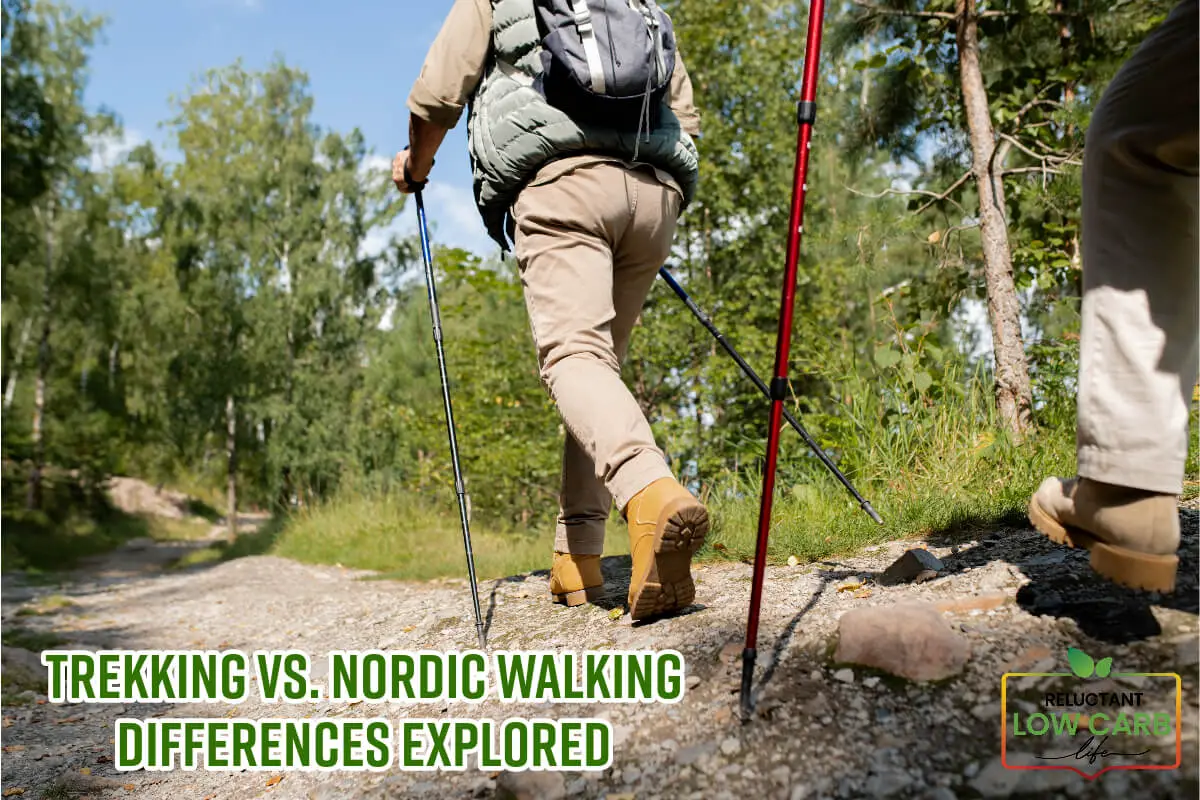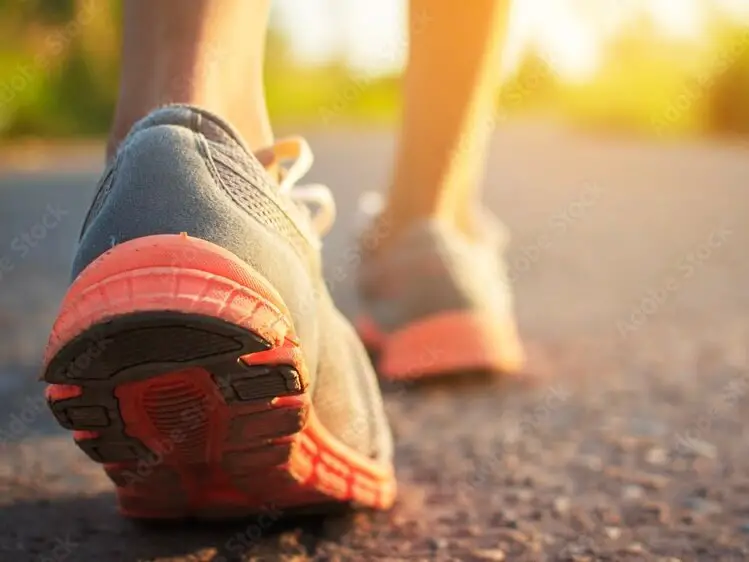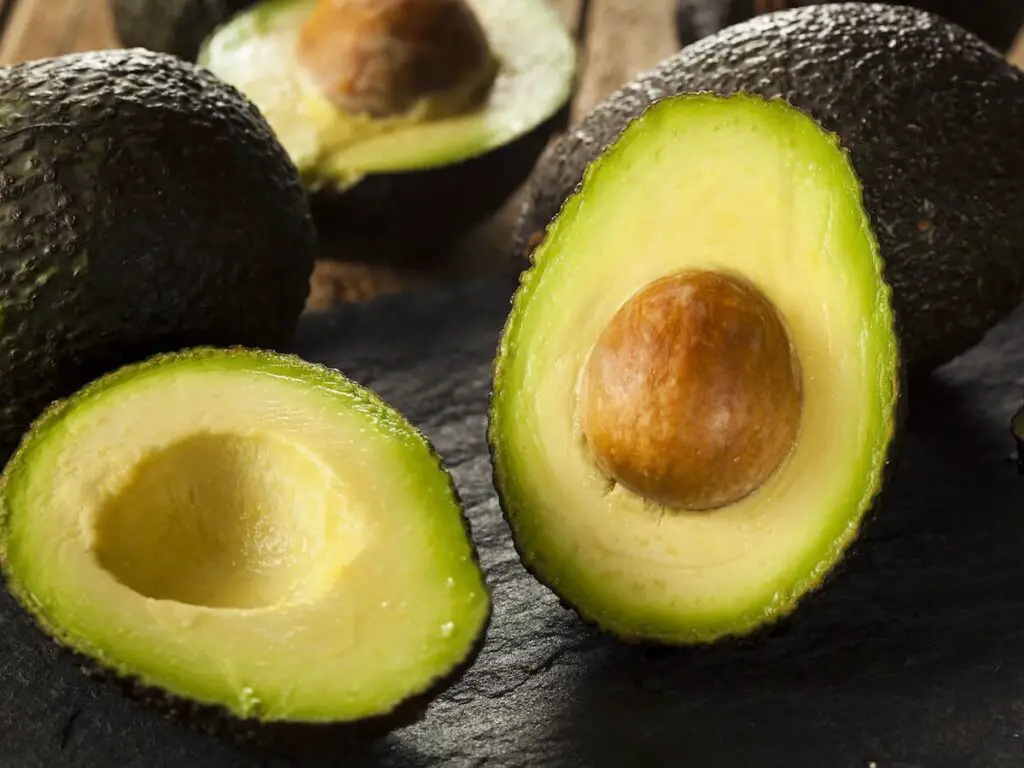When most people encounter Nordic walking, there’s often a misconception that it resembles trekking. However, it’s essential to recognize that trekking and Nordic walking are distinct physical activities.
While trekking and Nordic walking activities involve poles, they each employ specialized poles designed for their specific purpose. Join us as we delve into the disparities between trekking and Nordic walking, focusing on the dedicated poles crafted for each activity.
Table of Contents
- Trekking Vs. Nordic Walking: Unraveling The Key Differences
- Trekking Vs. Nordic Walking: Contrasting Outdoor Pursuits
- Trekking Vs. Nordic Walking Poles
- Six Tips To Guide Your Pole Purchase
- Related Question
Trekking Vs. Nordic Walking: Unraveling The Key Differences
Walking with poles is an excellent way to boost your core fitness and strength, and having your pair ensures that you’re always ready for an invigorating exercise session, no gym required!
Whether you step out of your front door, visit a local park with friends, or participate in a class organized by a club, these versatile tools offer a convenient way to enhance your physical well-being. However, it’s crucial to distinguish between Nordic walking poles and trekking poles and what is the difference between each activity, as they serve different purposes and are often mistakenly categorized.
Trekking Vs. Nordic Walking: Contrasting Outdoor Pursuits
Regarding outdoor activities, trekking and Nordic walking are distinctive pursuits with unique characteristics and appeal. In this article, we’ll explore the fundamental differences between trekking and Nordic walking, shedding light on the nature of these activities and the role of poles in enhancing the experience.

Trekking: Conquering The Wilderness
Trekking, often associated with venturing into the mountains or remote wilderness areas, is an adventure that calls for resilience and endurance. It involves embarking on extended journeys, sometimes spanning several days, while navigating rugged terrains and facing the challenges of the great outdoors.
The Role Of Trekking Poles:
In trekking, poles play a crucial role in providing stability and support. Trekkers utilize these poles to assist in ascending steep mountain slopes or descending challenging terrain. The poles are valuable tools to distribute weight, enhance balance, and reduce strain on the lower body during long, arduous treks.
Camping Along the Way:
Many trekking enthusiasts embark on multi-day excursions, setting up campsites in the wilderness to rest and rejuvenate before continuing their journey. These expeditions offer a unique opportunity to connect with nature, disconnect from the hustle and bustle of everyday life, and challenge one’s physical and mental limits.

Nordic Walking: A Neighborhood Pursuit
On the other hand, Nordic walking presents a contrasting image. It is a fitness-oriented activity that involves walking with specialized poles specifically designed for this purpose. While some individuals take their Nordic walking adventures into natural settings, the core of Nordic walking often occurs in more familiar surroundings.
Distinct Nordic Walking Poles:
Nordic walking poles are distinct from traditional trekking poles. They feature a unique design, including glove-style straps for a specific technique. These straps facilitate the efficient Nordic walking motion, emphasizing the involvement of the upper body in each stride.
Fitness And Core Strength:
Nordic walking is prized for its fitness benefits. It engages a substantial percentage of your muscles, including those in the upper body, making it an excellent full-body workout. People often use Nordic walking as a convenient and effective way to improve their core strength and overall physical fitness.
In The Neighborhood:
Many Nordic walking enthusiasts opt for the convenience of practicing their sport in their local neighborhoods or nearby parks. This allows regular exercise without requiring extensive travel or extended periods away from home.
The Key Distinction Between Trekking And Nordic Walking:
While both trekking and Nordic walking involve poles, the key distinction lies in their objectives. Trekking is an immersive wilderness experience encompassing challenging terrains, extended expeditions, and the pursuit of adventure.
In contrast, Nordic walking primarily focuses on fitness, with an emphasis on utilizing specialized poles to enhance core strength and overall health, often in more urban or suburban settings.
Trekking and Nordic walking cater to different preferences and interests, offering unique opportunities for exploration and self-discovery. Whether you’re drawn to the rugged wilderness and extended trekking journeys or the accessible fitness and health benefits of Nordic walking, both activities provide enriching experiences that allow individuals to connect with the world around them in their distinctive ways.
Trekking Vs. Nordic Walking Poles
One of the primary distinctions between trekking and Nordic walking lies in the poles utilized. Although both sports incorporate poles into their activities, they employ two distinct types of poles, each serving a unique purpose.
Let’s delve further into the contrasting characteristics of trekking and Nordic walking poles.
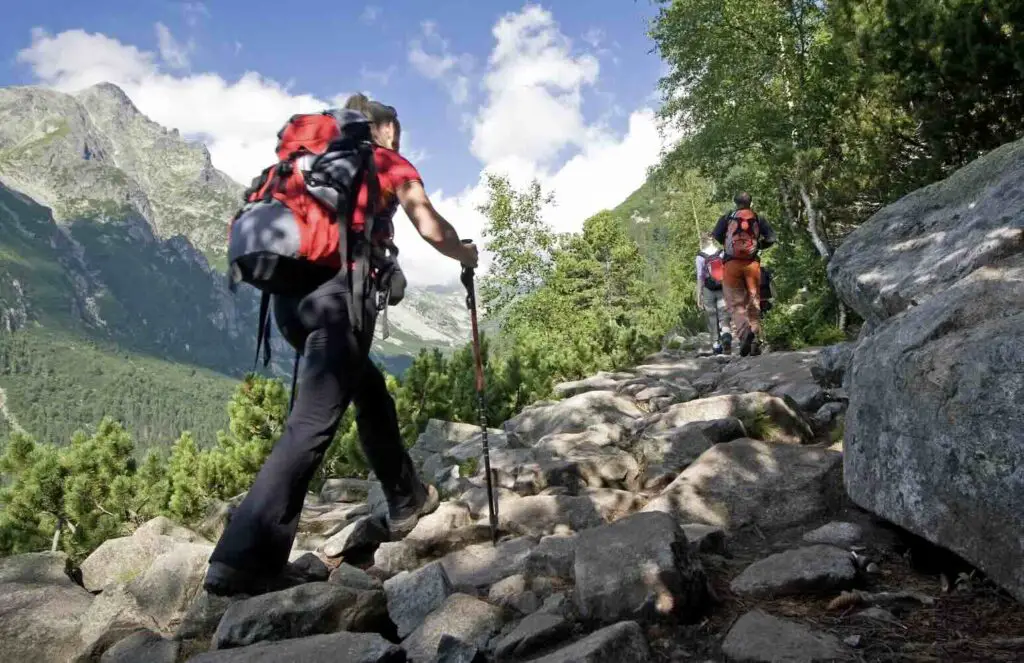
Nordic Walking Poles: The Essentials
Nordic walking poles are essential for you to do your Nordic walking. Without the poles, you will just be doing regular walking. Here are some features of Nordic Walking poles.
Glove-Style Strap:
The glove-style strap is the most distinctive feature of Nordic walking (NW) poles. This strap extends from the wrist to the palm and always includes a separate thumb hole. This design lets you release the pole during the Nordic walking swing technique while maintaining control.
Quick Release System:
Nordic Walking poles typically come equipped with a quick-release system for the strap, a feature rarely found in most trekking poles. Popular brands like TSL, Leki, and Exel usually incorporate a button on the top of the pole for easy strap adjustment.
Streamlined Design:
Nordic walking poles are designed for a streamlined appearance, offering efficiency in motion. Their shape facilitates the fluid Nordic walking technique, making them perfect for various terrains, including hills and coastal paths.
Trekking Poles: The Essentials
For most people who Trek, having some Trekking poles is also essential. Here is some information about Trekking poles:
Wrist Loop:
Trekking poles feature a wrist loop that keeps the grip constant, providing stability while walking. This loop is primarily used to prevent the poles from being dropped unintentionally.
Curved Or Square Top:
Most trekking poles have a curved or square-shaped top. This design caters to the specific demands of trekking, offering stability and support on rocky, uneven, or mountainous terrain.
Rubber Paws:
If you plan to walk on paved surfaces, trekking or Nordic Walking poles may require rubber “paws” to attach to the road end of the poles. These paws enhance grip and reduce wear on hard surfaces.
However, you don’t need them when walking on grass or trails, as the inbuilt spike is a sufficient anchor.
Use With Caution For Single Poles:
Using a single trekking or NW pole is not advisable, as it can lead to imbalance and uneven exertion on one side of the body. If you must use a single pole, switch it between hands every 15 minutes to maintain symmetry. Nordic walking should always be done with two poles.
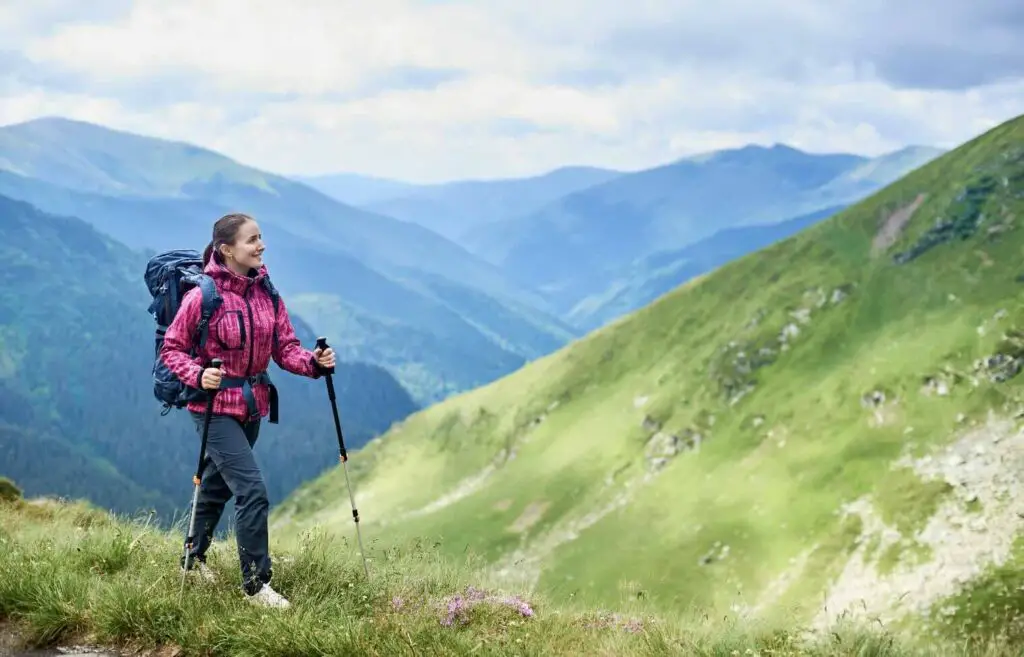
Six Tips To Guide Your Pole Purchase
Whether you are looking to buy trekking poles or Nordic Walking poles, there are things you should remember when looking to purchase the poles:
Understand Pole Types:
Recognize that Nordic walking poles are adapted ski poles designed to improve core strength and posture while trekking poles are primarily for stability and rhythm on varied terrains.
Choose The Right Strap Size:
Nordic walking straps come in different sizes, often tailored for men’s hands. It’s advisable to confirm with the supplier which strap size suits you best – snug but not so tight that it restricts circulation.
Consider Terrain:
Nordic walking poles work well on smoother terrains, including hills and coastal paths, whereas trekking poles excel on rugged and uneven terrain.
Rubber Paws For Tarmac:
Invest in rubber “paws” for your poles’ road end if you plan to walk on paved surfaces. These attachments enhance grip and protect the poles.
Avoid Single-Pole Use:
Refrain from using just one hiking/trekking pole, which can create an imbalance. Always use two Nordic walking poles for symmetry and effectiveness.
Embrace The Benefits:
Regardless of the type of pole or walking style you choose, remember that poles offer many benefits, from enhancing core fitness to boosting confidence on muddy or slippery terrain.
The Power Of Poles For Trekking Or Nordic Walking
Choosing between Nordic walking and trekking poles depends on your fitness goals and the terrain you plan to conquer. These versatile tools empower you to take charge of your fitness journey, offering physical benefits and boosting your confidence outdoors.
Whether you opt for Nordic walking or trekking, you’ll discover the extraordinary power of poles, transforming your walking experience into a stimulating and rewarding adventure.
So, grab your poles, step outside, and embrace the world of walking with renewed vigor and enthusiasm!
At Reluctant Low Carb Life, we are staunch advocates of the Health Trifecta: Fullness, Fitness, and Freshness. Additionally, we embrace the pillars of health, wellness, and graceful aging. Our mission is to provide honest and precise information to individuals dedicated to adopting a healthy lifestyle while enhancing their fitness and well-being.
We have a free monthly newsletter that is filled with information and helps you remain updated. Subscribe to the Reluctant Low Carb Life newsletter by clicking here.
Listen to our weekly podcast, Reluctant Low Carb Life, on all the major podcast platforms by clicking here.
Follow us on Instagram and Facebook by clicking here.
Related Question
What Happens If You Eat Too Much Cheese On Keto?
Cheese can be eaten on a keto diet but should be used as a flavoring, not the main course. If you overeat cheese, it could affect your weight loss. Some people have a hard time handling a lot of cheese. When on a Keto Diet, we recommend looking at cheese as a way to flavor your food and not as the main course for your keto meal.
You can read more about What Happens If You Eat Too Much Cheese On Keto? by clicking here.
What Does It Mean If You Crave Sugar On Keto?
Being on a keto diet should help you not to crave sugar. But some people who are on a keto diet may still crave sugar. There could be many reasons you still crave sugar, including eating hidden sugars in your foods and drinking too much diet soda. Or your keto diet includes too many carbs, or you are addicted to sugar.
You can read more about What Does It Mean If You Crave Sugar On Keto? by clicking here.
Yes, You Can Be Thin And Addicted To Sugar
Unsweetened almond milk should not make you fat. It is low in calories and has no carbohydrates or low sugars. When compared to whole milk, unsweetened almond milk is a much better type of milk to drink. The sweetened version of almond milk is higher in calories, carbohydrates, and sugars.
You can read more about Yes, You Can Be Thin And Addicted To Sugar by clicking here.

